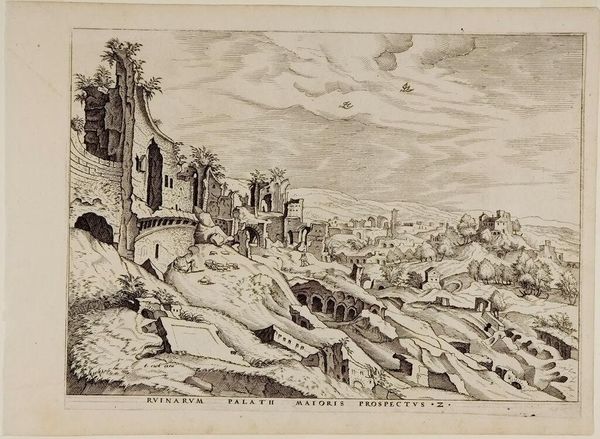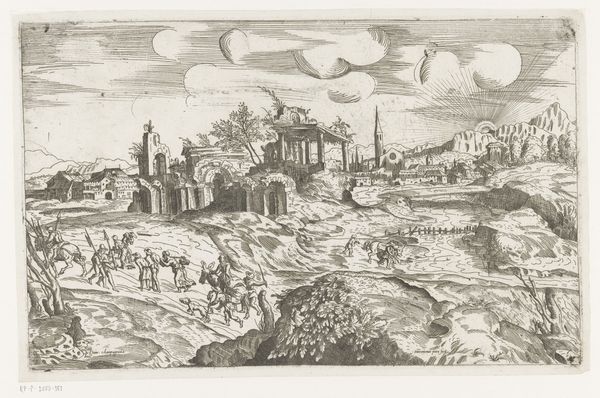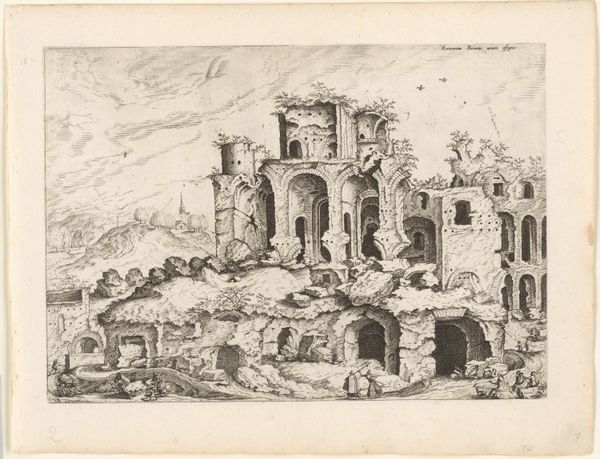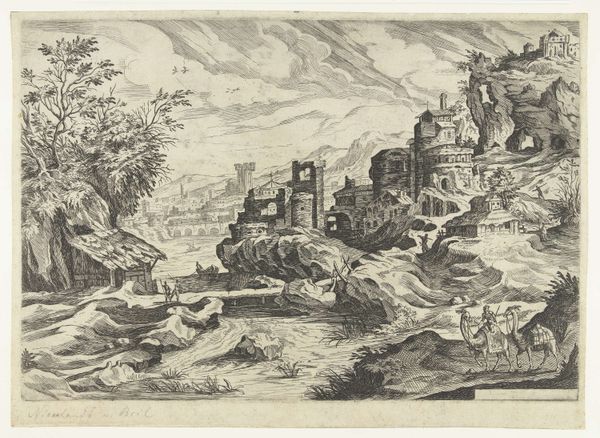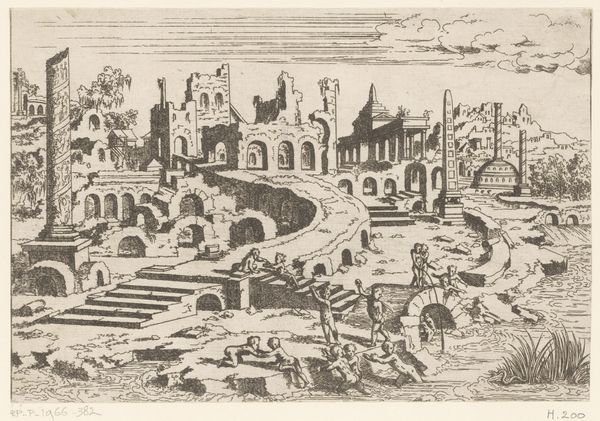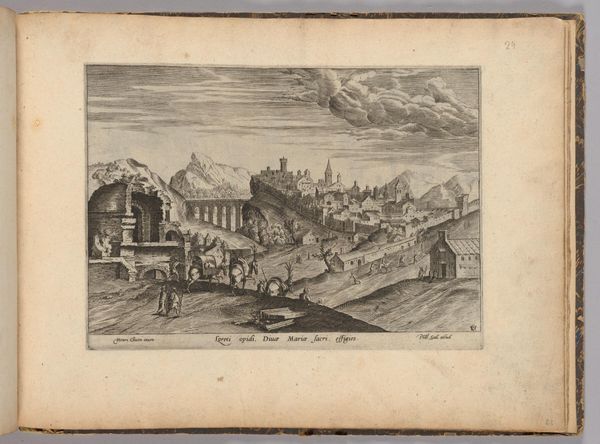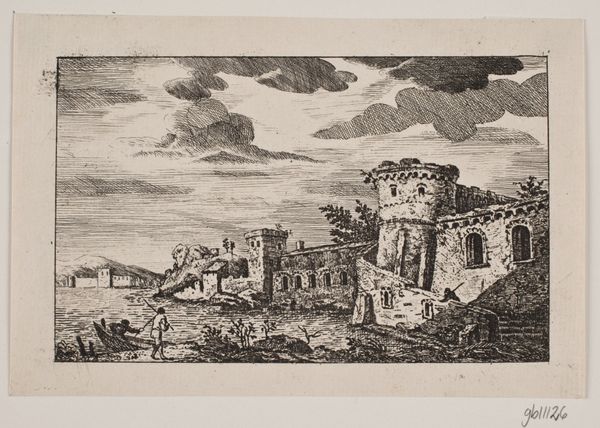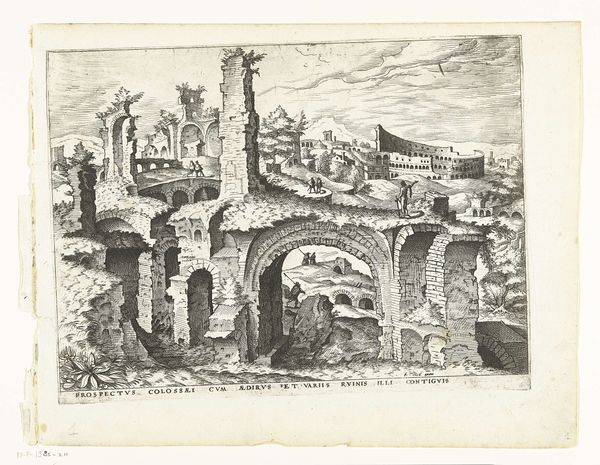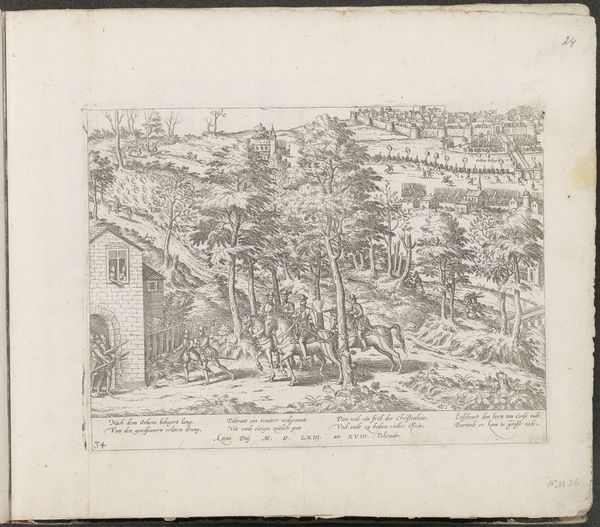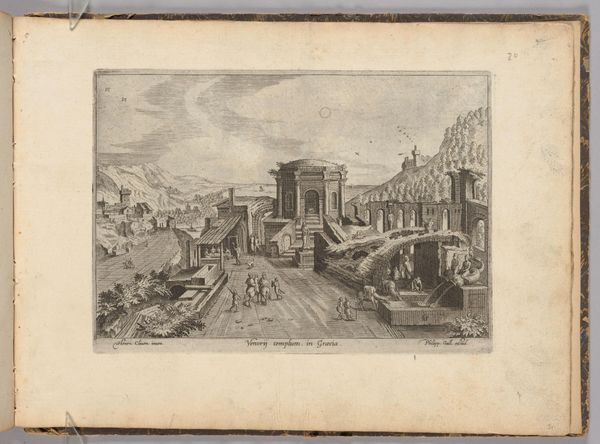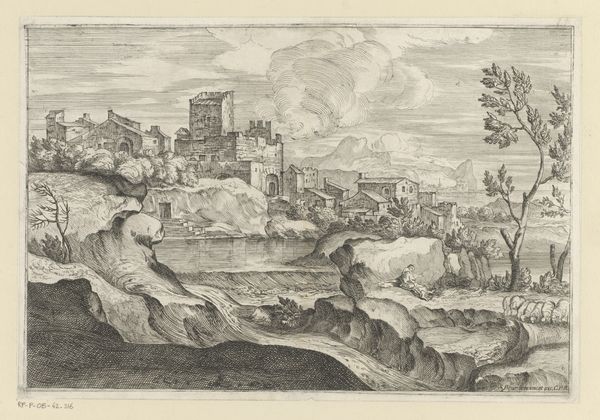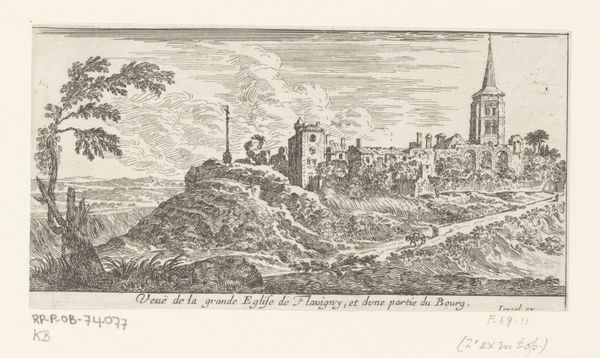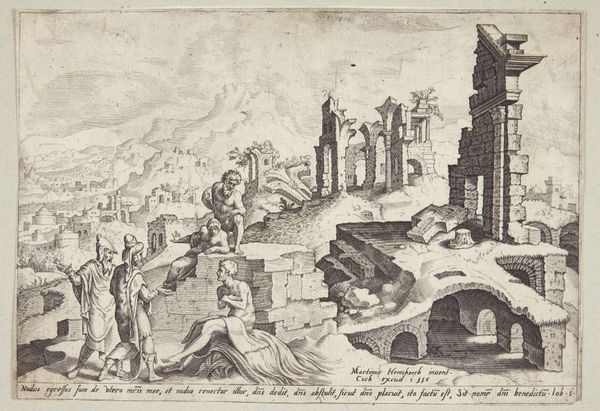
print, etching, engraving
#
pen drawing
#
mechanical pen drawing
# print
#
pen illustration
#
pen sketch
#
etching
#
old engraving style
#
landscape
#
11_renaissance
#
personal sketchbook
#
sketchwork
#
pen-ink sketch
#
pen work
#
sketchbook drawing
#
cityscape
#
engraving
Dimensions: height 243 mm, width 328 mm
Copyright: Rijks Museum: Open Domain
Curator: Immediately, I’m struck by the desolate grandeur. It’s quite dramatic. Editor: This is "Tweede gezicht op de Palatijn in Rome," or "Second view of the Palatine in Rome," an etching and engraving made by Johannes or Lucas van Doetechum sometime between 1561 and 1600. It’s currently held at the Rijksmuseum. Curator: The technique is remarkable, particularly the use of line and hatching to convey form and texture. The very material, the ink on paper, gives this an antiquated and slightly melancholic effect. It captures the fall of architectural wonders of Ancient Rome with tremendous impact. Editor: The process of creating multiple prints from a single plate means this image was likely widely distributed. Consider who had access to it. The print medium would have helped disseminate information about Roman architecture during the Renaissance to artists and scholars, standardizing knowledge about classical forms, even contributing to shared aspirations about society and its architectural legacy. Curator: Note how the structure itself is dissected by the artist, to underscore visual details; the composition directs our eye towards a vista in the distance. I think the arrangement of ruins as a collection of discrete blocks also suggests a certain objectivity. There’s an attempt to catalogue and understand, rather than merely romanticize the decay. Editor: But look closer at the workers scattered among the ruins. They represent not just the ongoing physical decay of Rome, but also labor practices – the stones were harvested and recycled for the benefit of newer buildings and churches! Who benefits from this destruction is key to me. Curator: A provocative point. I will concede that there's undeniable evidence of cultural, material exploitation. But consider the image-making: without this commitment to structural analysis and perspective, the artwork risks failing to achieve the gravitas or visual harmony it possesses. The light and shadow cast depth and add to the pathos. Editor: I see the value in both. Understanding artistic processes reveals more about social, political and economics contexts of image making, yet without formalism, these processes can become shallow. It all starts with understanding materials, light, shadow, composition— Curator: And it all must finish within understanding who makes, benefits, and gains in social capital through art history!
Comments
No comments
Be the first to comment and join the conversation on the ultimate creative platform.
